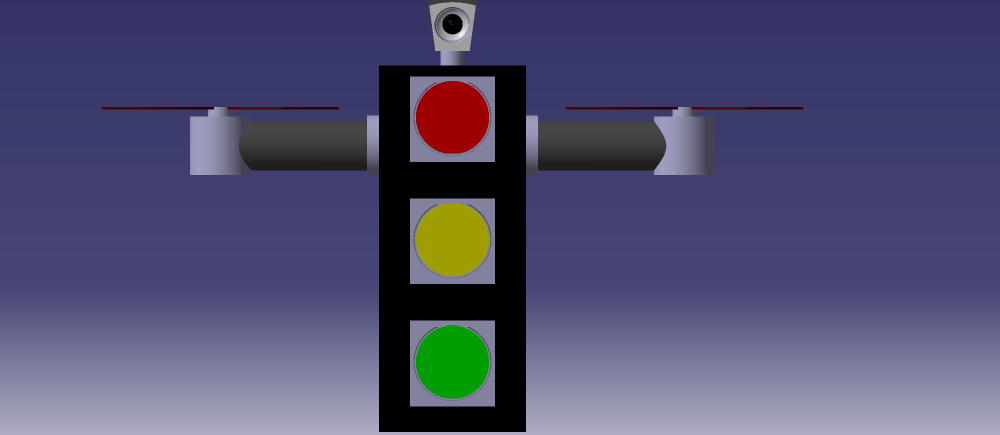By Akanimo Sampson
A Rael-Science post says the Handan Public Security Bureau in Northern China has deployed three types of traffic robots to assist human officers in the city.
Quoting a report in state-run news agency Xinhua, the post quotes Deputy Head of the Ministry of Public Security’s Traffic Management Research Institute, Zhou Zuoying, as saying the bots’ deployment marks China’s first use of “robot traffic police.”
This is happening as Police officers in Zhengzhou, China have been spotted wearing sunglasses equipped with facial recognition software that allows them to identify individuals in a crowd. These surveillance sunglasses were actually rolled out last year, but a recent report from China’s QQ published a series of photos of the glasses in action.
China has consistently been ahead of the curve in terms of utilizing artificial intelligence (AI) for surveillance. The country’s CCTV system tracked down a BBC reporter in just seven minutes during a demonstration in 2017.
But this new technology, developed by LLVision, takes China’s surveillance efforts to a whole new level. Not just in theory, either — reports from the official People’s Daily newspaper seem to indicate that it’s improving police work.
With the Lunar New Year just around the corner, it’s a busy time of year for the country’s many airports, railway stations, and public transportation hubs. Chinese state media has reported that police wearing the specs at the East Railway Station in Zhengzhou have already spotted seven people wanted in connection with major criminal cases and have caught more than 25 people who were using someone else’s identity.
Not only do the surveillance glasses actually work, but they also work better — and faster — than traditional CCTV setups. Security footage is notoriously grainy, and even if cameras are being monitored in real-time, the lag between spotting someone who might be a person of interest and calling authorities can be enough time for that person to make a clean getaway.
The sunglasses are connected to a handheld device that uses facial recognition software to compare who the wearer sees against a pre-loaded database packed with photos of 10,000 suspects. And it does so in just one tenth of a second.
“By making wearable glasses, with AI [artificial intelligence] on the front end, you get instant and accurate feedback,” LLVision Chief Executive Wu Fei told the Wall Journal. “You can decide right away what the next interaction is going to be.” However, Wu did add that the accuracy isn’t perfect. Environmental “noise” in a crowded terminal, for instance, could skew the results.
Skewed results aren’t the only concern that comes with giving law enforcement wearable surveillance: many have also pointed out that the devices could lend themselves to racial profiling, and even more broadly, have the potential to infringe on citizens’ privacy.
As William Nee, a China researcher at Amnesty International, said to the Wall Street Journal: “The potential to give individual police officers facial-recognition technology in sunglasses could eventually make China’s surveillance state all the more ubiquitous.”
Given that Chinese law enforcement is already using technology that’s uncomfortably reminiscent of Mission Impossible, it seems like that ubiquity has already arrived.
Meanwhile, each of the three types of robots looks slightly different from the others and will serve a unique function, which the Global Times — another state-run outlet — detailed in its own report.
One type is a “road patrol robot” designed to look like a human traffic officer, with a yellow uniform and white hat. That bot is capable of identifying drivers and snapping photos of their illegal behavior.
Another is an “advice traffic robot.” That one will post up in vehicle management stations where it will answer residents’ questions and guide them where they need to go. It’ll also automatically report any security risks or suspects to police, the Global Times wrote.
The third type is an “accident warning robot” designed to let drivers in passing vehicles know when human police have a traffic accident to deal with.
The robots will be on duty 24/7, Handan Public Security Bureau official Li Huai told Chinese news site hebnews.cn, according to the Global Times’ report, but it isn’t clear whether that applies to just one of each type of robot or several.
What is clear, though, is that China is leaning into the use of technology for law enforcement.
The nation has already deployed facial recognition systems to catch jaywalkers and made RFID tags mandatory in new cars so drivers can’t skip out on paying highway tolls. It has also equipped some police officers with facial recognition glasses to help them spot people wanted in connection with crimes.
This isn’t the first time China has deployed police robots, either — in 2016, its AnBot security robot began making the rounds at the Shenzhen airport, and in 2017, its E-Patrol Robot Sheriff began patrolling streets.
It was seemingly only a matter of time before China found a way to use robots to help its traffic officers maintain order — and now, it appears that time has arrived.

